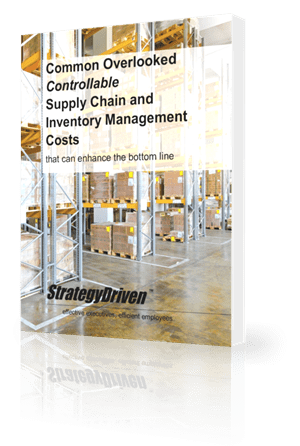7 Ways to Save Money and Maximize Your Fleet’s Productivity

Navigating the business landscape with a large fleet is a daunting task filled with countless challenges, from managing fuel expenses to ensuring timely maintenance. An efficient fleet is a crucial cornerstone of any logistics-based business, and maximizing productivity while keeping costs under control can directly translate into increased profits. This article outlines seven key strategies to enhance your fleet’s productivity while economizing your operations.
Performing a Comprehensive Fleet Efficiency Audit
An effective starting point to boost your fleet’s efficiency is by performing a comprehensive fleet efficiency audit. This process involves evaluating every facet of your fleet’s operation, from vehicle utilization to maintenance schedules, fuel consumption, and driver behavior. The objective of this exercise is to identify any inefficiencies or wastages and devise strategic measures to address these issues.
The audit should analyze the age, make, model, and condition of each vehicle in the fleet. Older vehicles tend to consume more fuel and require more maintenance, making them less cost-effective. On the other hand, newer models may have advanced features that enhance fuel efficiency and reduce overall operational costs.
The audit should also scrutinize the utilization rate of each vehicle. Under-utilized vehicles can tie up valuable capital and inflate your fleet’s operating costs. On the flip side, overutilization can lead to excessive wear and tear, increasing your maintenance and repair expenses.
Driver behavior is another crucial aspect of the fleet efficiency audit. Factors such as aggressive driving, speeding, unnecessary idling, and improper gear shifting can all lead to excessive fuel consumption and increase the likelihood of accidents, both of which can significantly raise operating costs.
Maintenance schedules are also an integral part of the audit. Proactive maintenance can prevent costly breakdowns and prolong the life of your vehicles. Regularly maintained vehicles also tend to have better fuel efficiency and lesser emissions, making them more cost-effective and environmentally friendly.
The audit should assess the effectiveness of your fleet’s management system. Advanced fleet management systems can provide valuable insights into your fleet’s operations, help streamline processes, enhance productivity, and ultimately save costs.
7 Ways to Save Money and Maximize Your Fleet’s Productivity
Saving money in your company’s fleet management doesn’t entail any one thing. By taking a look at the greater picture, we are able to conceptualize many ways that your employees, new technologies, and other businesses and services can collaborate together to bring your fleet greater efficiency and savings. Here are 7 ways that your fleet management can save more money and improve productivity.
1. Partnering With Dealerships, Auction Houses, and Vehicle Manufacturers
As fleet managers, forging strong partnerships with dealerships, auction houses, and vehicle manufacturers can have a significant impact on your cost-efficiency. Dealerships often offer volume discounts to companies that purchase or lease multiple vehicles, which can translate into considerable savings. They also provide after-sales services such as maintenance and repair, which can contribute to improved vehicle longevity and reduced downtime.
Auction houses, on the other hand, offer an economical way to diversify and expand your fleet. They provide a wide array of vehicles, from nearly new models to well-maintained older ones, at competitive prices. Additionally, they offer an effective channel to sell off your old, under-performing vehicles.
Vehicle manufacturers can also be valuable partners in your pursuit of fleet efficiency. They can provide insights into the latest models and technologies that can help enhance your fleet’s performance and fuel efficiency. They may also offer fleet management solutions, including telematics and predictive maintenance systems, that can help optimize your fleet operations.
2. Finding Reliable Partnerships in Car Shipping Services
Shipping vehicles can be a complex and costly aspect of fleet management. However, finding reliable partnerships in car shipping services can help streamline this process and reduce expenses. A trusted car shipping partner can offer economical rates, timely deliveries, and comprehensive insurance coverage, thereby minimizing potential risks and unexpected costs.
When choosing a car shipping partner, it is essential to consider their reputation, experience, and expertise in handling the specific types of vehicles in your fleet. They should have the necessary infrastructure, equipment, and trained personnel to ensure the safe and efficient transport of your vehicles.
A good car shipping partner should provide excellent customer service and clear communication. They should keep you updated about the status of the shipment and promptly address any concerns or issues that may arise. This can help avoid unnecessary delays and ensure that your vehicles are always ready for service when needed.
3. Fuel, Windshield, and Oil Services for Commercial Fleets
Fuel, windshield, and oil services constitute a significant portion of a fleet’s operating expenses. Therefore, finding ways to economize these services can result in substantial savings. Fuel costs, in particular, can be optimized by investing in fuel-efficient vehicles and implementing policies to minimize wastage, such as reducing idling and encouraging economical driving habits.
Regular windshield maintenance and prompt repairs can also help save costs. Damaged windshields can compromise the safety of the vehicle and lead to costly accidents. They can also impair the driver’s vision and fuel efficiency by increasing drag. Therefore, investing in regular windshield checks and prompt repairs can enhance safety and save costs in the long run.
4. The Importance of Having a Trusted Mechanic and Tire Shop for Fleet Managers
Having a trusted mechanic and tire shop is crucial for fleet managers. Regular maintenance checks and prompt repairs can prevent costly breakdowns, reduce downtime, and prolong the life of your fleet vehicles. A reliable mechanic can identify potential issues before they escalate into major problems and can provide expert advice on prolonging vehicle lifespan.
Tires are one of the most critical components of a vehicle and require particular attention. Worn out or under-inflated tires can adversely affect fuel efficiency and pose a safety risk. A trusted tire shop can ensure that your fleet vehicles are always equipped with the right tires, properly inflated, and in good condition.
Having a trusted mechanic and tire shop can provide peace of mind. Knowing that your vehicles are in expert hands can free up time and resources, allowing you to focus more on other aspects of fleet management.
5. Upfitting Commercial Vehicles and the Importance of Company Branding
Upfitting refers to modifying a vehicle to better suit the specific needs of your business. This could involve installing additional storage, enhancing security features, or upgrading the vehicle’s interior or exterior. Well-planned upfitting can enhance productivity, ensure driver safety, and prolong vehicle life. Moreover, it can create a professional image and strengthen your company’s branding.
Branding your vehicles not only advertises your business but also instills a sense of pride and responsibility in your drivers. It reminds them that they represent your company and are accountable for their driving behavior. This, in turn, can lead to safer driving practices, which can reduce accident rates and associated costs.
It is crucial to ensure that upfitting is carried out by professionals and is in line with legal standards. Poorly executed upfitting can compromise vehicle safety and performance, resulting in increased maintenance costs and a shorter vehicle lifespan.
6. Effective Inventory Management Practices and Spare Parts Optimization
Effective inventory management is a key aspect of efficient fleet management. Having a well-organized inventory of spare parts can significantly reduce vehicle downtime and ensure your fleet operates smoothly. An optimal inventory system can track the usage of parts, predict future needs, and help avoid stock outs or overstocking.
Implementing an inventory management system can save time and resources. It can provide real-time updates on parts availability, thereby helping to streamline maintenance schedules and reduce downtime.
Optimizing your spare parts inventory can help save costs. By monitoring usage patterns, you can identify parts that have a high failure rate and take proactive measures. This could involve sourcing more reliable parts or investigating underlying issues causing the high failure rate.
7. Investing in Driver Safety and Accident Prevention Measures
Driver safety is paramount in fleet management. Accidents can result in substantial direct costs, such as repairs and insurance claims, as well as indirect costs, such as downtime, lost productivity, and damage to the company’s reputation. Investing in driver safety training and accident prevention measures can therefore yield significant returns.
Driver safety training programs can educate drivers about safe driving practices, the importance of regular vehicle checks, and how to respond in case of an emergency. These programs can help reduce accident rates, lower insurance premiums, and improve overall fleet safety.
Investing in advanced safety technology, such as collision avoidance systems, lane departure warnings, and automatic emergency braking, can also enhance driver safety. These technologies can prevent accidents, protect drivers, and ultimately save costs.
Utilizing Predictive Maintenance to Reduce Downtime
In the quest to improve fleet efficiency, predictive maintenance plays a significant role. Predictive maintenance leverages data from various vehicle sensors to predict potential failures before they occur. This proactive approach can save substantial costs associated with unexpected breakdowns and prolong vehicle lifespan.
Through predictive maintenance, minor issues can be identified and addressed during scheduled maintenance, thereby preventing major breakdowns that could result in costly repairs and extensive downtime. By scheduling maintenance activities when they are actually needed, fleets can avoid unnecessary preventive maintenance and the associated costs.
Furthermore, predictive maintenance can help optimize your fleet’s operations. By minimizing unexpected breakdowns, you can ensure that your vehicles are always available when needed, thereby enhancing productivity and customer satisfaction.
Predictive maintenance also contributes to driver safety. By identifying potential failures early, it can prevent accidents caused by vehicle malfunctions. This can also reduce your insurance premiums and potential liability claims.
The adoption of predictive maintenance can provide a competitive edge. By keeping your fleet in top condition and minimizing downtime, you can offer reliable and timely services to your customers, thereby distinguishing your business in the marketplace.
Cost Analysis of In-House Fleet Management vs. Outsourcing
One of the crucial decisions that businesses with fleets need to make is whether to manage their fleet in-house or outsource it. Each approach has its pros and cons, and the decision largely depends on your business’s specific needs, resources, and objectives.
In-house fleet management provides greater control over your fleet’s operations. It allows you to tailor your fleet management strategies to your business’s specific needs and make quick decisions when needed. However, it also requires substantial resources, including staff, equipment, and infrastructure. Additionally, it requires specialized knowledge and expertise in various aspects of fleet management.
Outsourcing your fleet management, on the other hand, can offer several benefits. It allows you to leverage the expertise and resources of a professional fleet management company. These companies have advanced fleet management systems and wide networks of service providers, which can result in cost savings and improved efficiency.
However, outsourcing also has its downsides. It may result in lesser control over your fleet’s operations, and communication gaps can lead to misunderstandings or inefficiencies. Additionally, the cost-effectiveness of outsourcing largely depends on the quality of the service provider.
It is crucial to conduct a thorough cost-benefit analysis before deciding whether to manage your fleet in-house or outsource it. This analysis should consider not just the direct costs but also the indirect costs and potential benefits associated with each approach.
Managing a fleet is a complex task that involves numerous challenges. However, by implementing the strategies outlined in this article, you can significantly enhance your fleet’s productivity and save costs. Whether it’s performing a comprehensive fleet efficiency audit, partnering with reliable service providers, investing in vehicle maintenance and driver safety, or leveraging advanced technologies like predictive maintenance, each strategy plays a vital role in achieving efficient fleet management. Ultimately, the key is to continuously monitor your fleet’s performance, stay updated with the latest industry trends and technologies, and be willing to adapt and innovate.












Leave a Reply
Want to join the discussion?Feel free to contribute!